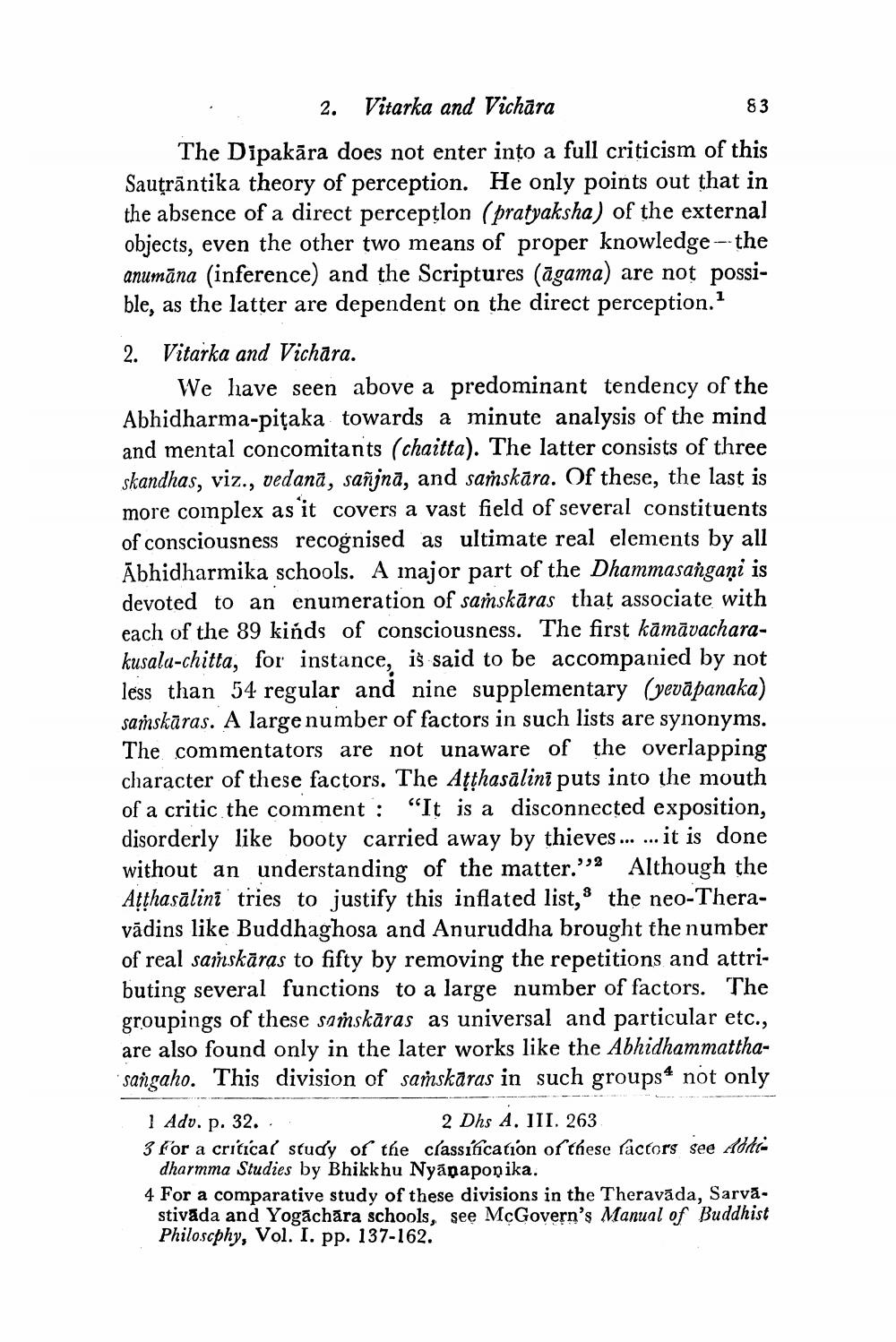________________ 83 2. Vitarka and Vichara The Dipakara does not enter into a full criticism of this Sautrantika theory of perception. He only points out that in the absence of a direct perception (pratyaksha) of the external objects, even the other two means of proper knowledge -- the anumana (inference) and the Scriptures (agama) are not possible, as the latter are dependent on the direct perception. 2. Vitarka and Vichara. We have seen above a predominant tendency of the Abhidharma-pitaka towards a minute analysis of the mind and mental concomitants (chaitta). The latter consists of three skandhas, viz., vedana, sanjna, and sanskara. Of these, the last is more complex as it covers a vast field of several constituents of consciousness recognised as ultimate real elements by all Abhidharmika schools. A major part of the Dhammasangani is devoted to an enumeration of samskaras that associate with each of the 89 kinds of consciousness. The first kamavacharakusala-chitta, for instance, is said to be accompanied by not less than 54 regular and nine supplementary (yevapanaka) sanskaras. A large number of factors in such lists are synonyms. The commentators are not unaware of the overlapping character of these factors. The Atthasalini puts into the mouth of a critic the comment : "It is a disconnected exposition, disorderly like booty carried away by thieves... ... it is done without an understanding of the matter." Although the Atthasalini tries to justify this inflated list, 8 the neo-Theravadins like Buddhaghosa and Anuruddha brought the number of real samskaras to fifty by removing the repetitions and attributing several functions to a large number of factors. The groupings of these samskaras as universal and particular etc., are also found only in the later works like the Abhidhammatthasangaho. This division of sanskaras in such groups4 not only | Adv. p. 32.. 2 Dhs A. III. 263 3 For a critical study of the classification of these factors see Addi dharmma Studies by Bhikkhu Nyapaponika. 4 For a comparative study of these divisions in the Theravada, Sarvastivada and Yogachara schools, see McGovern's Manual of Buddhist Philoscphy, Vol. I. pp. 137-162.




